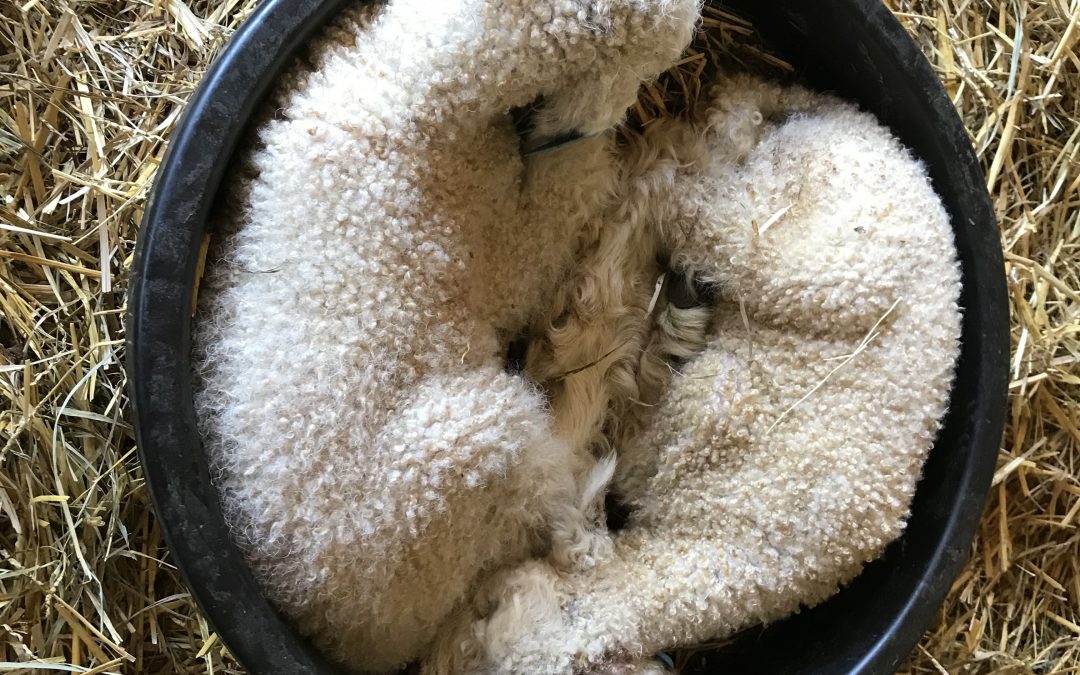Stillpoint Farm Notes
Lambing time has come – and gone! We had 23 lambs, all white ones. They are now bouncing and racing around, playing on the creek bank and having lamb races. We ended up with one single, one set of triplets, and the rest twins. All without any special issues.
The creep feeder is set for the lambs so they can begin eating grain. This is an enclosed area with adjustable openings so the lambs can get access, but the bigger sheep can’t. The lambs will get their first round of vaccinations at about 30 days old (mid-May). They are then given boosters 30 days later. (sound familiar?).
In addition to growing lambs May is the start of hay season. The hay fields have been fertilized and the rain is very welcome at this point. Normally we do our first cutting around Memorial Day. Hay making is really a 4- step process. First the hay is cut. Then it is tedded or basically stirred about to help it dry. It then is raked into windrows so the baler can pick it up and bale it into either small square bales or bigger round bales. Watching the baling is a real treat. Who would think a machine could scoop up the hay, compact it, wrap it in string, tie the string, and (if small square bales), throw it into a wagon – without computers!
Cold hardy vegetables are in the ground and beginning to be harvested. All the potato fields have also been planted by May. Tender vegetables such as tomatoes and peppers will go in the ground after the last frost date – typically considered to be Mother’s Day around here.
The hop yard really starts to come to life in May. The poles have been straightened and cables tightened up. The sheep were moved out at the end of April so the hop shoots can start to grow without being nibbled off. The rows have been crowned to help control mildews. Stringing is then done by hand in May. This entails running coir twine from the ground where it is held in place with ‘hop clips’ over the trellis wires and back down. The coir twine is made from coconut fiber which provides a rough surface for the hops to grip and is also strong enough to withstand the hop picker.

